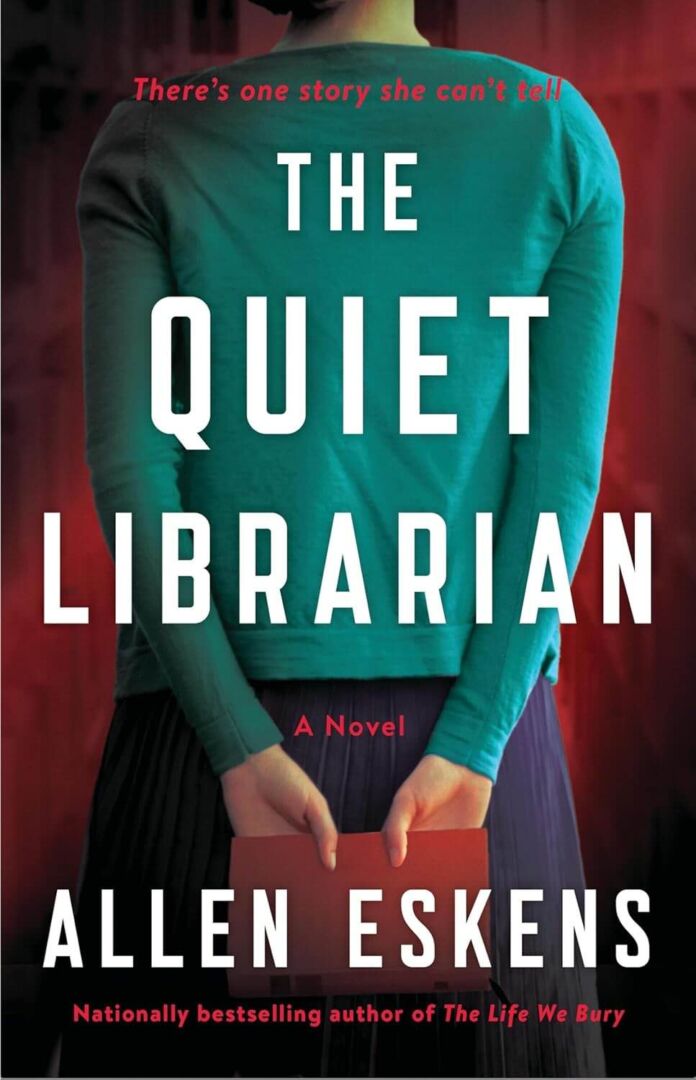Allen Eskens, the USA Today bestselling author known for his gripping mysteries like “The Life We Bury” and “The Stolen Hours,” delivers another masterpiece with “The Quiet Librarian.” This powerful narrative weaves together the horrors of the Bosnian War with a present-day mystery thriller, creating a compelling story about survival, revenge, and the price of protecting those we love.
Plot and Narrative Structure
The story follows Hana Babic, a middle-aged librarian in Minnesota whose carefully constructed life begins to unravel when her best friend Amina is murdered. But Hana harbors a secret – she was once Nura Divjak, a legendary warrior known as the Night Mora during the Bosnian War. When Amina’s death leaves her grandson Dylan in Hana’s care, she must confront her violent past while protecting the child from those who would harm him.
Eskens masterfully alternates between two timelines: present-day Minnesota and Bosnia during the war in the 1990s. The parallel narratives enhance the story’s tension, gradually revealing how young Nura became the quiet librarian Hana, while building toward a climactic confrontation with her past.
Character Development
The author excels in creating complex, multidimensional characters:
- Hana/Nura – A compelling protagonist whose transformation from a teenage girl to a fierce warrior to a quiet librarian is both believable and heart-wrenching
- Dylan – The vulnerable yet resilient eight-year-old who helps humanize Hana and gives her a reason to fight
- David Claypool – A detective whose growing relationship with Hana adds depth to the story
- Luka Savić – A chillingly effective antagonist whose past crimes drive the present-day narrative
Writing Style and Atmosphere
Eskens’s prose is lean and effective, with a journalist’s eye for detail and a poet’s sense of timing. His descriptions of war-torn Bosnia are haunting and vivid, while the contemporary sections maintain a taut thriller pace. The author shows particular skill in handling action sequences, whether describing guerrilla warfare in the Bosnian mountains or a confrontation in a Minnesota barn.
Themes and Depth
The novel explores several profound themes:
- The lasting impact of war and trauma
- The complexity of revenge versus justice
- The power of chosen family
- The price of survival
- The possibility of redemption
Critical Analysis
While the novel is overwhelmingly successful, there are a few areas where it could have been stronger:
- The coincidental nature of some plot developments, particularly regarding the antagonist’s diplomatic position
- Occasional pacing issues in the middle section
- Some secondary characters could have been more fully developed
Historical Context and Accuracy
One of the novel’s greatest strengths is its handling of the Bosnian War. Eskens demonstrates thorough research and sensitivity in depicting this complex conflict, avoiding simplistic good-versus-evil narratives while still clearly portraying the horror of ethnic cleansing and systematic rape as weapons of war.
Impact and Relevance
“The Quiet Librarian” resonates particularly strongly in our current global climate, where discussions about war crimes, refugee experiences, and generational trauma remain tragically relevant. The author manages to tackle these heavy themes while maintaining the momentum of a thriller.
Comparative Analysis
Readers who enjoyed “The Quiet Librarian” might also appreciate:
- “Girl at War” by Sara Nović
- “The Book of Unknown Americans” by Cristina Henríquez
- “The Sympathizer” by Viet Thanh Nguyen
Technical Elements
The dual timeline structure is handled expertly, with each section building tension that feeds into the other. The pacing is generally strong, though it occasionally slows in the middle sections. Dialog is natural and serves character development well.
Final Verdict
“The Quiet Librarian” is a gripping, emotionally resonant novel that successfully blends historical fiction with contemporary thriller elements. While not perfect, its strengths far outweigh its weaknesses, delivering a compelling story that will stay with readers long after the final page.
Strengths:
- Powerful character development
- Vivid historical detail
- Skillful handling of complex themes
- Strong emotional impact
- Well-researched context
Areas for Improvement:
- Some plot conveniences
- Occasional pacing issues
- Secondary character development
- Some predictable elements
Recommendation
This book is highly recommended for readers who appreciate:
- Historical fiction with contemporary relevance
- Complex female protagonists
- Well-researched war narratives
- Character-driven thrillers
- Stories about redemption and chosen family
However, sensitive readers should be aware that the book contains detailed descriptions of war violence and its aftermath.
Author Background
Allen Eskens continues to prove himself as a master of character-driven suspense with this departure from his previous work. While his earlier novels like “The Life We Bury” and “Nothing More Dangerous” were primarily set in contemporary America, “The Quiet Librarian” demonstrates his ability to tackle international historical fiction while maintaining his trademark psychological depth and suspense.
Conclusion
“The Quiet Librarian” is a testament to Eskens’s growth as a writer and his ability to handle complex historical material while maintaining the tension of a thriller. Despite some minor flaws, the novel succeeds in being both an engaging page-turner and a thoughtful exploration of war’s lasting impact on survivors. It’s a significant addition to both the historical fiction and thriller genres, offering readers a powerful story about the cost of survival and the possibility of redemption.
The book reminds us that behind every quiet facade might lie an extraordinary story of survival and resilience. It’s a novel that deserves attention not just for its entertainment value, but for its contribution to our understanding of war’s long shadow and the human capacity for both violence and healing.





